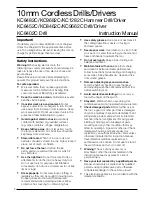
IP
edge
& Strata CIX
iv
TOSHIBA
IP4000-series UG November, 2011
Organization
This guide is divided as follows:
•
discusses basics of the IP4100 telephone.
•
Chapter 2 – Using Common Features
contains procedures on the various
telephone features.
•
contains information on the Battery, Adapter, Troubleshooting,
Handset, Compliance, and RF Exposure.
Conventions
Conventions
Description
Note
Elaborates specific items or references other information. Within
some tables, general notes apply to the entire table and numbered
notes apply to specific items.
Important!
Calls attention to important instructions or information.
Extension
Number
Press to answer a call to the Extension Number. Each station can have
multiple extension buttons. Incoming calls ring the extension button(s)
from the top down. For example, station 10's extensions ring 10-1 first,
then 10-2, 10-3, and 10-4. A station is considered busy when all
extensions are being used.
Note
The naming convention for DKT assignments within Toshiba is
Directory Numbers. For clarity and ease of understanding, the terms
Extension Number and Phantom Extension Number will be used in
this document in lieu of PDN and PhDN.
Arial bold
Represents telephone buttons.
Courier
Shows a computer keyboard entry or screen display.
“Type”
Indicates entry of a string of text.
“Press”
Indicates entry of a single key. For example: Type
prog
then press
Enter
.
Plus (+)
Shows a multiple PC keyboard or phone button entry. Entries
without spaces between them show a simultaneous entry. Example:
Esc
+
Enter
. Entries with spaces between them show a sequential
entry. Example:
#
+
5
.
Tilde (~)
Means “through.” Example: 350~640 Hz frequency range.
Denotes a procedure.
Denotes the step in a one-step procedure.
See Figure 10
Grey words within the printed text denote cross-references. In the
electronic version of this document (Library CD-ROM), cross-
references appear in blue hypertext.











































